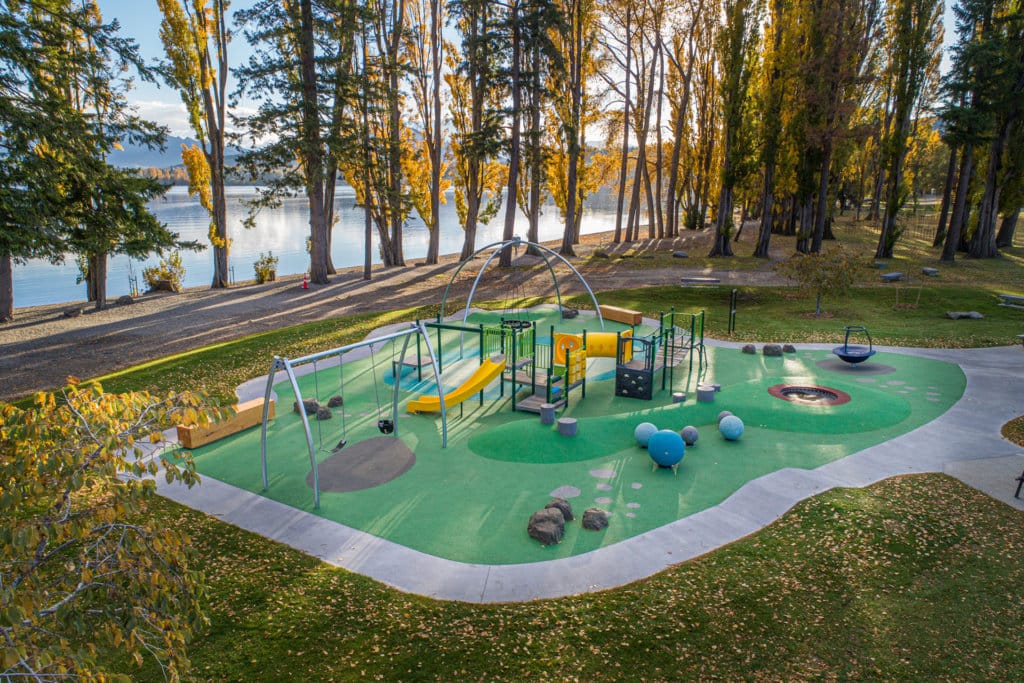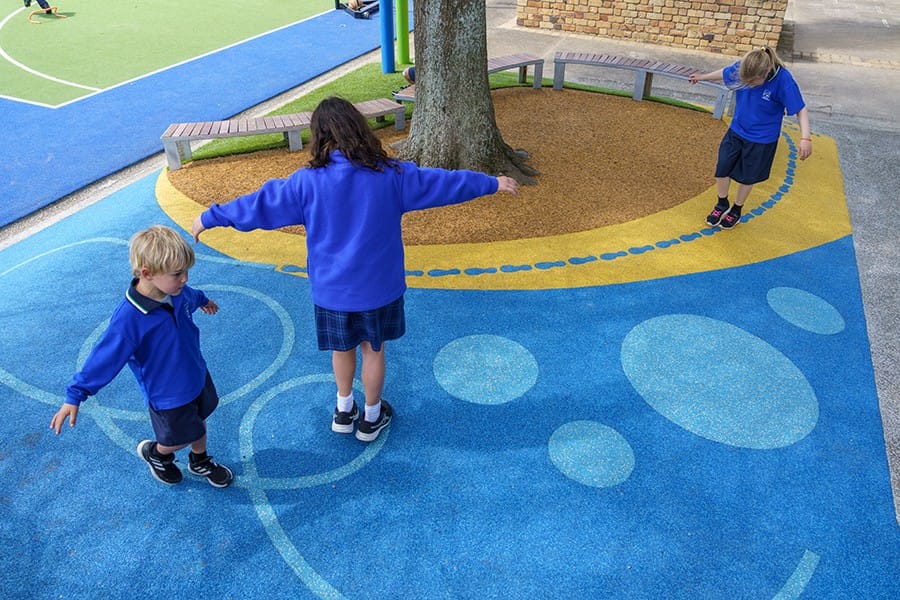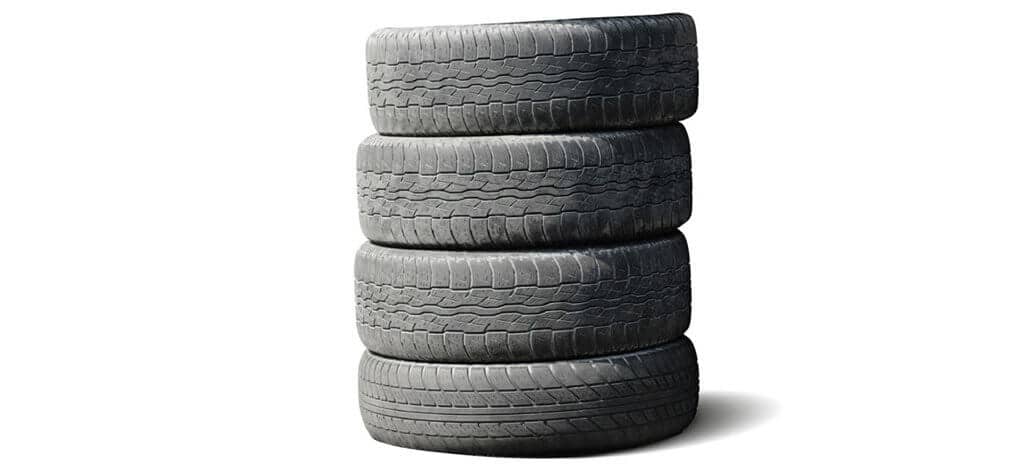What is Wet Pour Rubber Surfacing?

You may have heard us talk a little in our previous blog posts and videos about wet pour rubber playground surfacing and you may be asking: “Well, what is wet pour rubber?”
Today, we’re going to answer some of the questions you might have around wet rubber surfacing, from what it’s made of to how much it costs.
What is wet pour rubber surfacing?
Wet pour rubber surfacing is a mixture of rubber granules bound together by a polyurethane resin binder that is then poured onsite providing a seamless rubber surface. The process of combining the two components of rubber and resin is similar to mixing concrete and results in an evenly combined product that can achieve that seamless finish with no separation.
In a playground installation, wet pour rubber surfacing is often installed in a two-part process.
- Firstly, a layer of larger granules is installed to provide cushioning
- Followed by a colourful, wear layer made up of smaller granules installed on top of the first layer.
What types of rubber are used in wet pour rubber surfacing?
There are a few different types of rubber granules that can be used to create a wet pour rubber surface.
Utilizing recycled rubber from tyres is commonly used in the base layer of wet pour rubber installations in playgrounds because they are hard-wearing, they don’t need to go through a full breakdown process before being installed. Using recycled rubber products is a great way to repurpose a waste product that would otherwise be incinerated.
For the top layer, the main types of rubber used in New Zealand are:
- EPDM rubber granules
- Colour coated SBR rubber granules
- Rosehill TPV rubber granules
Of these, Rosehill TPV rubber has the best UV stability and durability. This means it holds its colour and integrity longer than the other types of rubber granules. It’s because of these features that we use Rosehill TPV in our Pour‘n’Play wet pour rubber product.

What types of binders are used in wet pour rubber surfacing?
There are two main types of PU binders used in wet pour rubber, each with their own durability and UV stability profiles. They are:
- Aliphatic binder
- Aromatic binder
Of the two, Aliphatic binder is more UV stable. Meaning it will last longer than Aromatic binders and will not discolour like the Aromatic binders do.
The best combination of granule and resin type, in our opinion, is Rosehill TPV granules mixed with Aliphatic resin. Surfaces made of these ingredients hold together better and keep their colour integrity for longer than the other options.
How long do wet pour rubber surfaces last?
Wet pour rubber surfaces can last for a long time. The have the longest product life when compared to other types of playground surface, like wood chip and PVC tiles which need replacing more frequently.
Depending on the types of rubber granules and binder used, wet pour rubber surfaces can last anywhere from 6 to 20 years and require minimal maintenance and repairs.
In fact, our highest quality Pour‘n’Play wet pour rubber surface which is made of Rosehill TPV rubber granules and uses an Aliphatic resin binder comes with a 10-year warranty.
How much does wet pour rubber cost?
Now that you have all the product details, let’s find out how much it costs?
The answer to this question depends on four different factors. We’re not going to get into the cost of all the different wet pour rubber surface types, but we can take a look at the cost of Numat’s wet pour rubber surface, Pour‘n’Play.
- The size of the area. The larger the area, the lower the cost per square meter.
- The type of materials used on the surface. The higher the quality of the materials used, the higher the cost.
- The height of the equipment around which the surface is installed. The higher the equipment, the thicker the base layer needs to be, requiring more rubber granules
- And the level of surface design. The more intricate the design, the longer it takes to install.
Size (M2 | Cost Range |
|---|---|
50 – 100 | $270 – $390 / M2 |
100 – 200 | $230 – $350 / M2 |
200 – 400 | $210 – $330 / M2 |
Base Prep | $50 – $90 / M2 |
Edging | $30 – $50 / Lineal Metre |
Here is a quick pricing breakdown that gives you a price range by area size.
There are also a couple of extra costs to be aware of before deciding that a wet pour rubber surface is right for you. Any base preparation costs and edging costs will also need to be considered.



